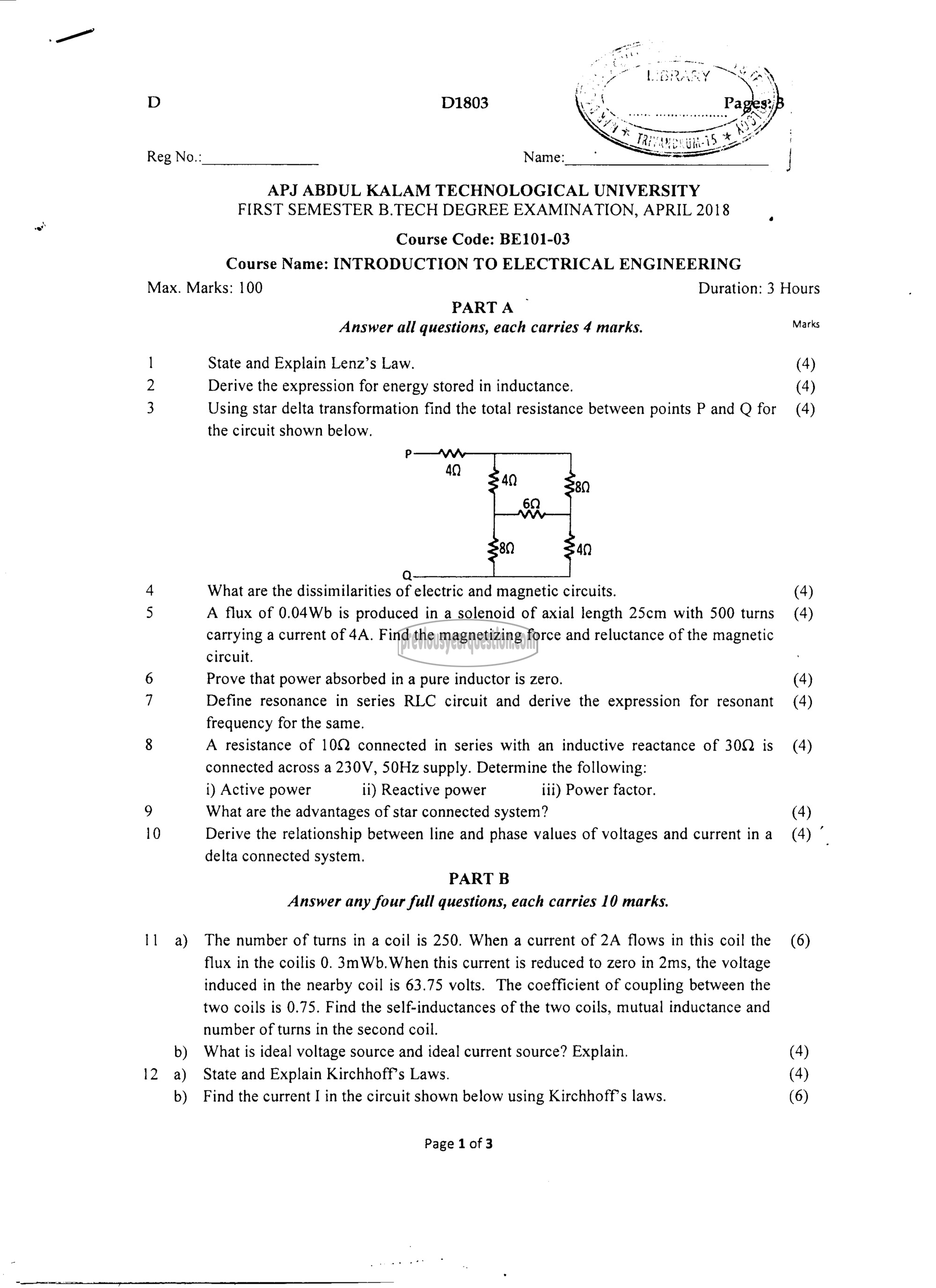APJ ABDUL KALAM TECHNOLOGICAL UNIVERSITY Previous Years Question Paper & Answer
Semester : S1 and S2
Subject : INTRODUCTION TO ELECTRICAL ENGINEERING
Year : 2018
Term : APRIL
Branch : MECHANICAL ENGINEERING
Scheme : 2015 Full Time
Course Code : BE 101-03
Page:1
D 21803
Reg No.: Name:
APJ ABDUL KALAM TECHNOLOGICAL UNIVERSITY
FIRST SEMESTER B.TECH DEGREE EXAMINATION, APRIL 2018
Course Code: BE101-03
Course Name: INTRODUCTION TO ELECTRICAL ENGINEERING
Max. Marks: 100 ١ Duration: 3 Hours
PARTA
Answer all questions, each carries 4 marks. Marks
1 State and Explain Lenz’s Law. (4)
2 Derive the expression for energy stored in inductance. (4)
3 Using star delta transformation find the total resistance between points P and Q for (4)
the circuit shown below.
مم
8 40 40
6೧
40 80
Q
4 What are the dissimilarities of electric and magnetic circuits. (4)
5 A flux of 0.04Wb is produced in a solenoid of axial length 25cm with 500 turns (4)
carrying a current of 4A. Find the magnetizing force and reluctance of the magnetic
circuit. .
6 Prove that power absorbed in a pure inductor is zero. (4)
7 Define resonance in series RLC circuit and derive the expression for resonant (4)
frequency for the same.
8 A resistance of 106) connected in series with an inductive reactance of 30೧ is (4)
connected across a 230V, 50Hz supply. Determine the following:
i) Active power ii) Reactive power iii) Power factor.
9 What are the advantages of star connected system? (4)
10 Derive the relationship between line and phase values of voltages and current ina (4) ©
delta connected system.
PART B
Answer any four full questions, each carries 10 marks.
11 ஐ The number of turns in ೩ coil is 250. When ೩ current of 2A flows in this coil the (6)
flux in the coilis 0. 3mWb.When this current is reduced to zero in 2ms, the voltage
induced in the nearby coil is 63.75 volts. The coefficient of coupling between the
two coils is 0.75. Find the self-inductances of the two coils, mutual inductance and
number of turns in the second coil.
b) What is ideal voltage source and ideal current source? Explain. (4)
12 a) State and Explain Kirchhoff’s Laws. (4)
0) Find the current I in the circuit shown below using Kirchhoff’s laws. (6)
Page 1 of 3
